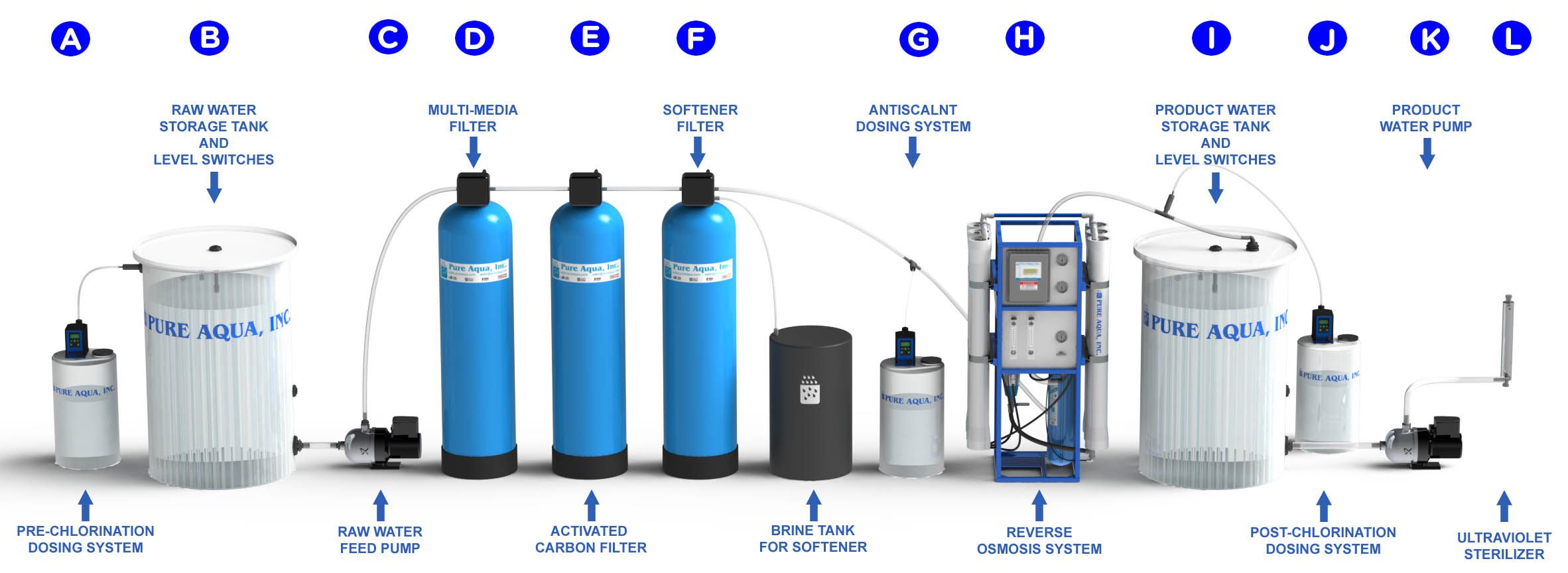What is RO (Reverse Osmosis)?
Reverse osmosis is one of the most effective, economical technologies available for removing a range of impurities from water.
Reverse osmosis (RO) is a special type of filtration that uses a semi-permeable, thin membrane with pores small enough to pass pure water through while rejecting larger molecules such as dissolved salts (ions) and other impurities such as bacteria. Reverse osmosis is used to produce highly purified water for drinking water systems, industrial boilers, food and beverage processing, cosmetics, pharmaceutical production, seawater desalination, and many other applications.
Photo credit: ESP Water products
How does it work?
Reverse osmosis is a continuously operating treatment technology that uses pressure to pass source water through a thin membrane and thereby separate impurities from water.
RO works by reversing the principle of osmosis, the natural tendency of water with dissolved salts to flow through a membrane from lower to higher salt concentration. This process is found throughout nature. Plants use it to absorb water and nutrients from the soil. In humans and other animals, kidneys use osmosis to absorb water from blood.
In an RO system, pressure (usually from a pump) is used to overcome natural osmotic pressure, forcing feedwater with its load of dissolved salts and other impurities through a highly sophisticated semipermeable membrane that removes a high percentage of the impurities. The product of this process is highly purified water.
The rejected salts and impurities concentrate above the membrane and are passed from the system to drain or onto other processes. In a typical commercial industrial application, 75% of the feedwater is purified. In applications in which water conservation is important, 85% of the feedwater is purified.
An RO system uses cross-filtration, where the solution crosses the filter with two outlets: the filtered water goes one way and the contaminated water goes another way. To avoid buildup of contaminants, cross-flow filtration allows water to sweep away contaminant buildup and enough turbulence to keep the membrane surface clean.
What is Reverse Osmosis Plant?
A reverse osmosis plant is a manufacturing plant where the process of reverse osmosis takes place. A RO plant has multi stage filtration process, passing the raw water through all these stages cleans and purifies the water. Some RO plant has the mechanism of adding additional minerals to the water so that the consumers gets the best of the water.
Content credit to ESP water products & wikipedia

